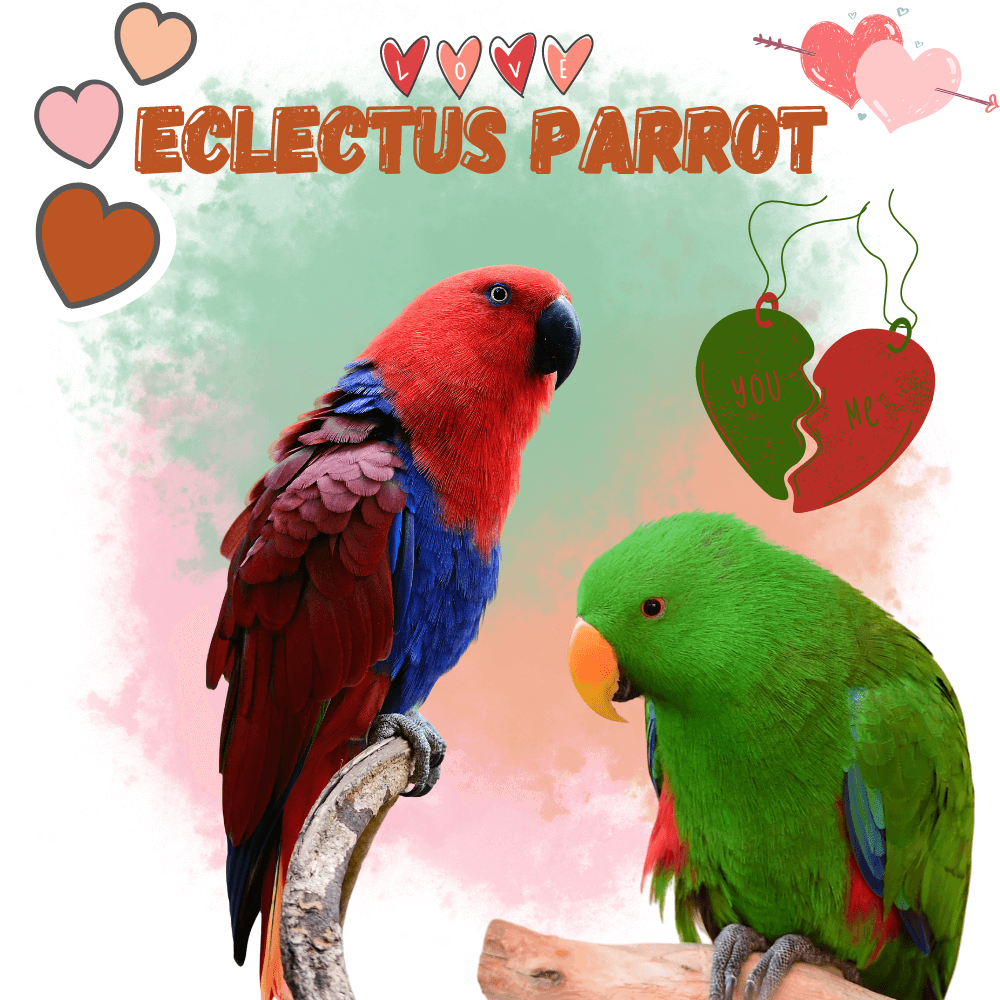Eclectus parrot: The plumage of the greater eclectus ranks it among the most beautiful parrots in the world. The source of the dazzling hue of its plumage is its odd diet.
The Eclectus parrot ( Eclectus roratus ) is a small bird that attracts attention with its colorful plumage and high-pitched vocalization. Its delicate feathers are more like hair than avian structures, one of the reasons why this bird is considered an exotic pet.
The 10 subspecies within this species are similar, as this sexual dimorphism is present in all of them and it is their most striking feature. It should be noted that their special plumage has a direct link with the nutrients that these birds absorb through their diet. Learn more about this fascinating little bird.
Eclectus parrot habitat
The Eclectus parrot covers a fairly wide distribution in terms of habitats. The ecosystems most likely to support this bird are the mangroves, savannahs, and forests located in New Guinea, the Solomon Islands, northeastern Australia, and the Moluccas.
This species usually wanders between coconut plantations and eucalyptus forests, at a height of fewer than 1900 meters. We can therefore say that this bird is common in coastal areas, low-altitude forests, and certain areas dedicated to crops.
Physical characteristics
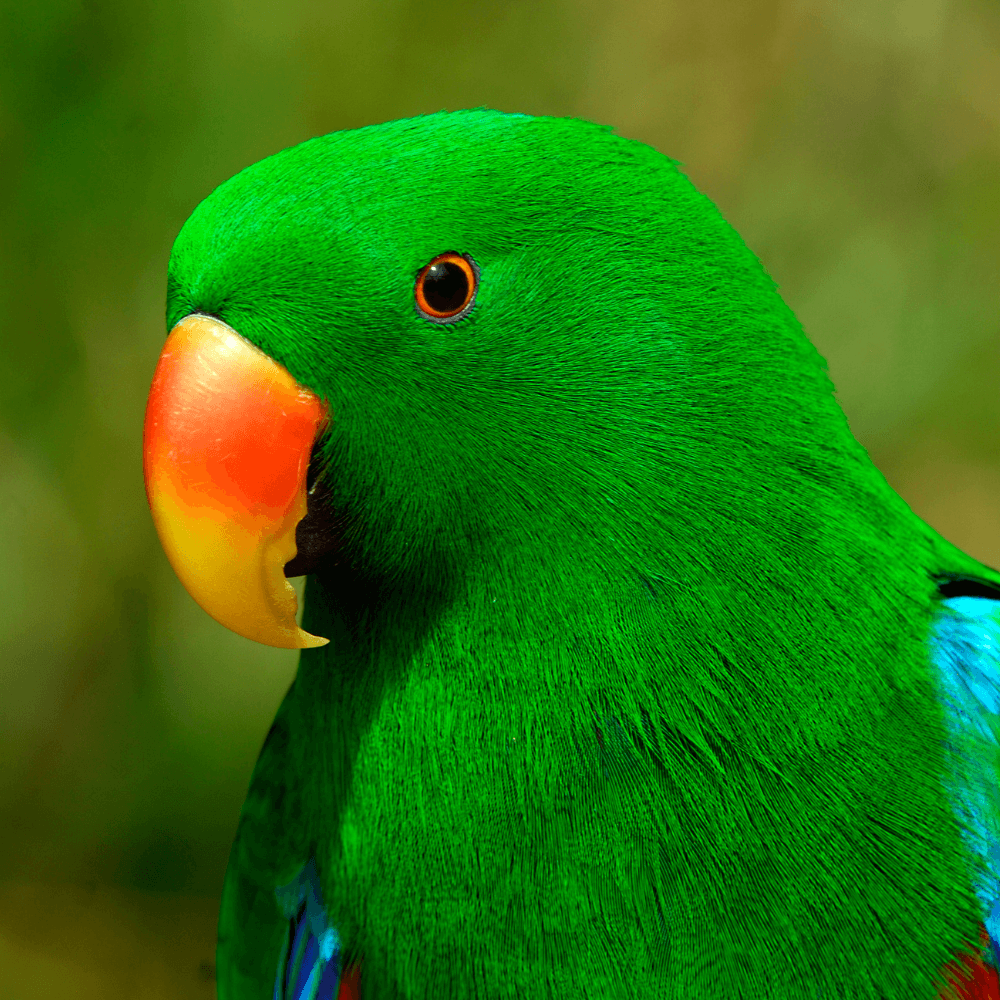
The large Eclectus measures between 35 and 42 centimeters and weighs between 355 and 615 grams. It is an easy bird to spot, thanks to the strong sexual dimorphism exhibited by males and females. Male plumage is coral, green, red, and blue, and the beak is orange.
For their part, the females have a black beak and red plumage, generally darker on the back. Blue or purple also predominates in females, especially on the chest and throat. Their tail is orange-yellow on top, and dark red on the underside, a red that lightens at the tip.
Moreover, this bird has a long life expectancy. Indeed, it can live up to 80 years. This bird is usually quite calm and does not bother anyone when kept in captivity as a pet.
However, if it shares its space with another specimen of the same species, it is possible that they are both noisy to mark their territory and communicate.
Eclectus parrot behavior
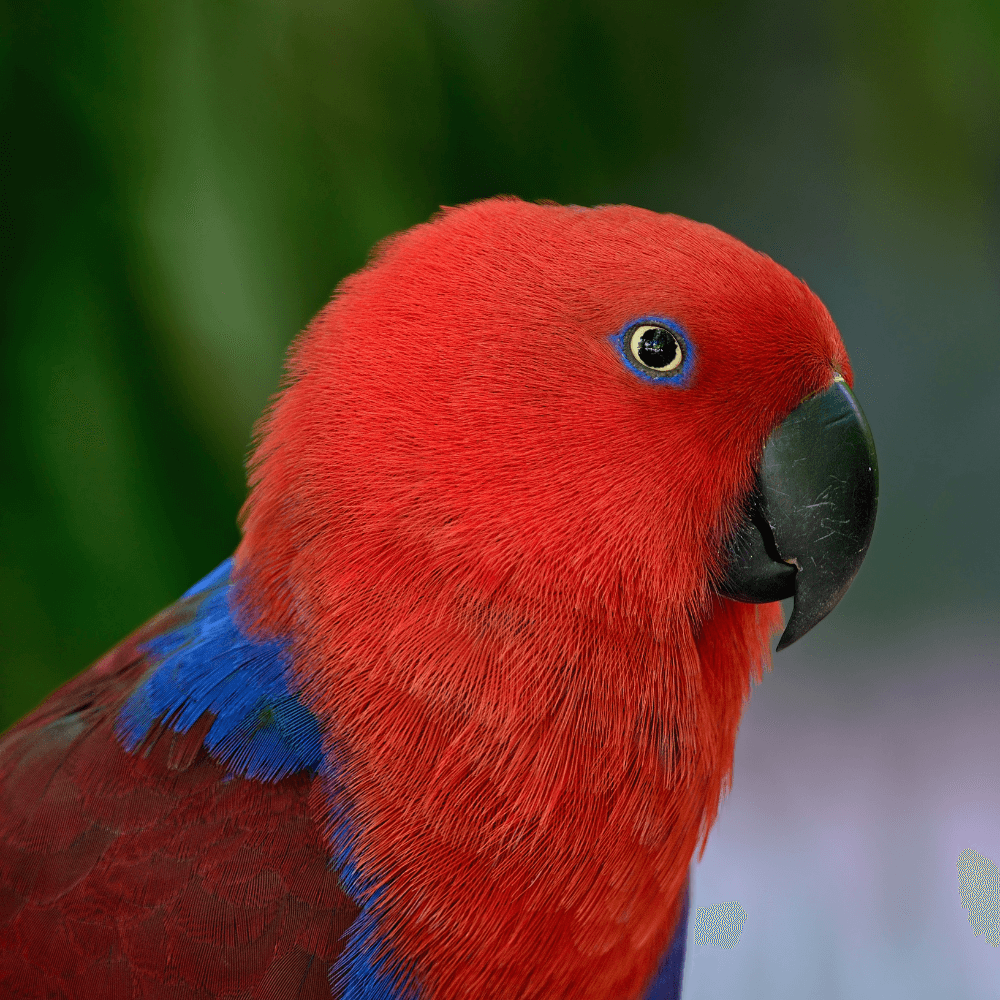
It has been observed that they are very curious and intelligent birds. They are distinguished from others by their high-pitched vocalization, which can sometimes annoy their masters. However, it is generally a friendly animal in captivity, if the masters earn its trust.
The character of the great eclectus depends on the sex. While the female is more dominant, the male is generally independent and aloof.
In the wild, these birds are characterized by a certain loneliness, although they can also be seen in pairs or in small groups where males predominate (especially when breeding). In groups, these birds are found in the treetops. They can also be seen flying at dawn or dusk when they are most active.
Eclectus parrot food
The diet of the Eclectus parrot is mainly fruit-based, although some prefer vegetables. The Eclectus roratus species likes ripe fruit. Interestingly, the digestive system of this animal is longer than that of other parrots, so it needs a diet rich in vegetable proteins and beta-carotene.
If you have a large eclectus parrot as a pet, it is important to ensure the optimal vitamin intake for its development, especially vitamins A, E, and D. The bird’s diet should be as healthy as possible because the increase in fat in its body would cause the appearance of black feathers due to stress.
Pellet feeds are not recommended. This is because they contain a lot of sugar and tend to cause kidney problems.
It is important to avoid inorganic foods, as the Eclectus parrot is weak against the toxins that certain foods contain. Generally speaking, the best diet for this bird is fresh fruit and some vegetables to its liking.
Eclectus parrot breeding
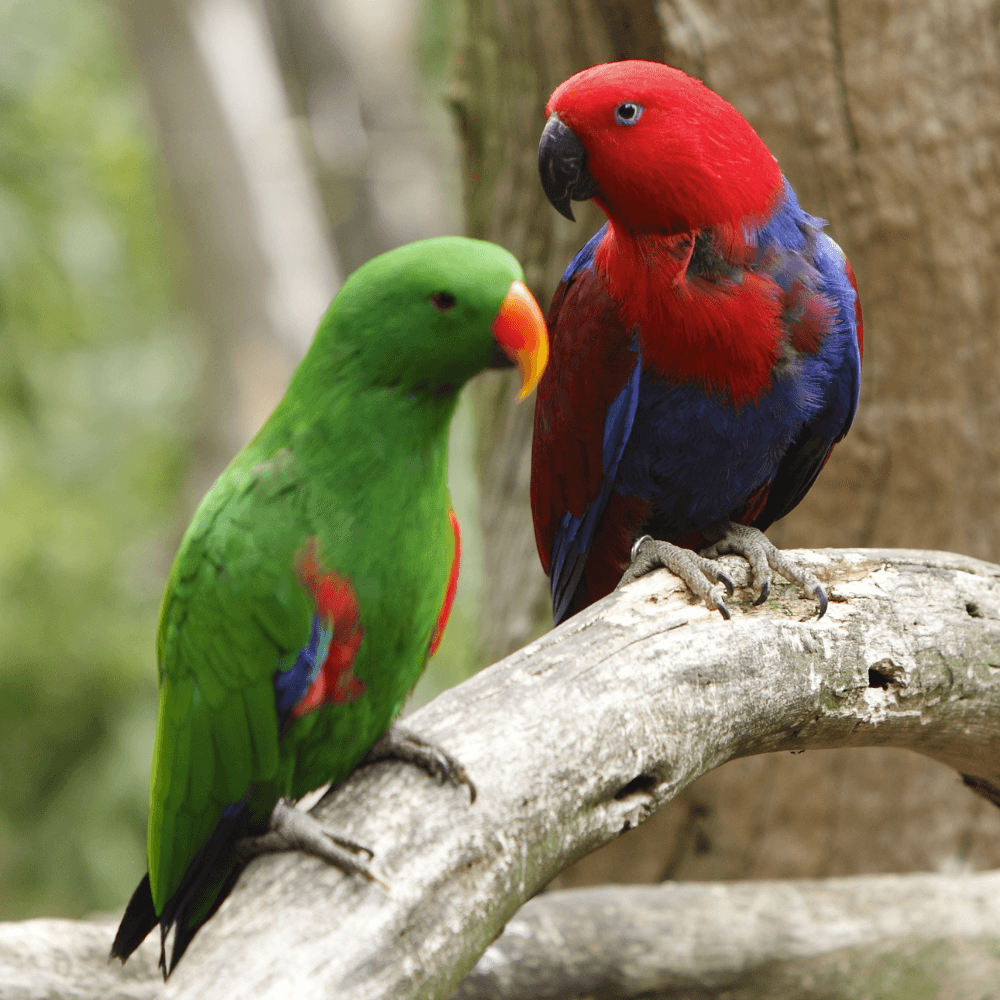
The reproduction of this bird depends on its geographical location. If it is in Australia, its copulation will take place between July and February. In the Solomon Islands, it copulates between June and September. And in Papua New Guinea, it can breed at any time.
Usually, these birds make their nest in a hole in the trunk of a large tree. On some occasions, the same tree may have more than one nest, and several birds tend to the same brood.
Incubation lasts between 25 and 30 days, during which time the female lays 2 eggs, usually oval and shiny. The education of the young generally lasts 3 months.
The females are responsible for the incubation and leave the young alone when feeding. The young are fed by the male as soon as the first eggs hatch, but gradually the female performs this task in full.
Conservation status
According to the International Union for Conservation of Nature ( IUCN ), the Eclectus parrot is not in great danger of extinction: its conservation status is “Least concern”.
However, the species sometimes faces illegal trafficking due to its beauty and plumage, so its population has declined a bit in recent years.
Eclectus parrot as pet
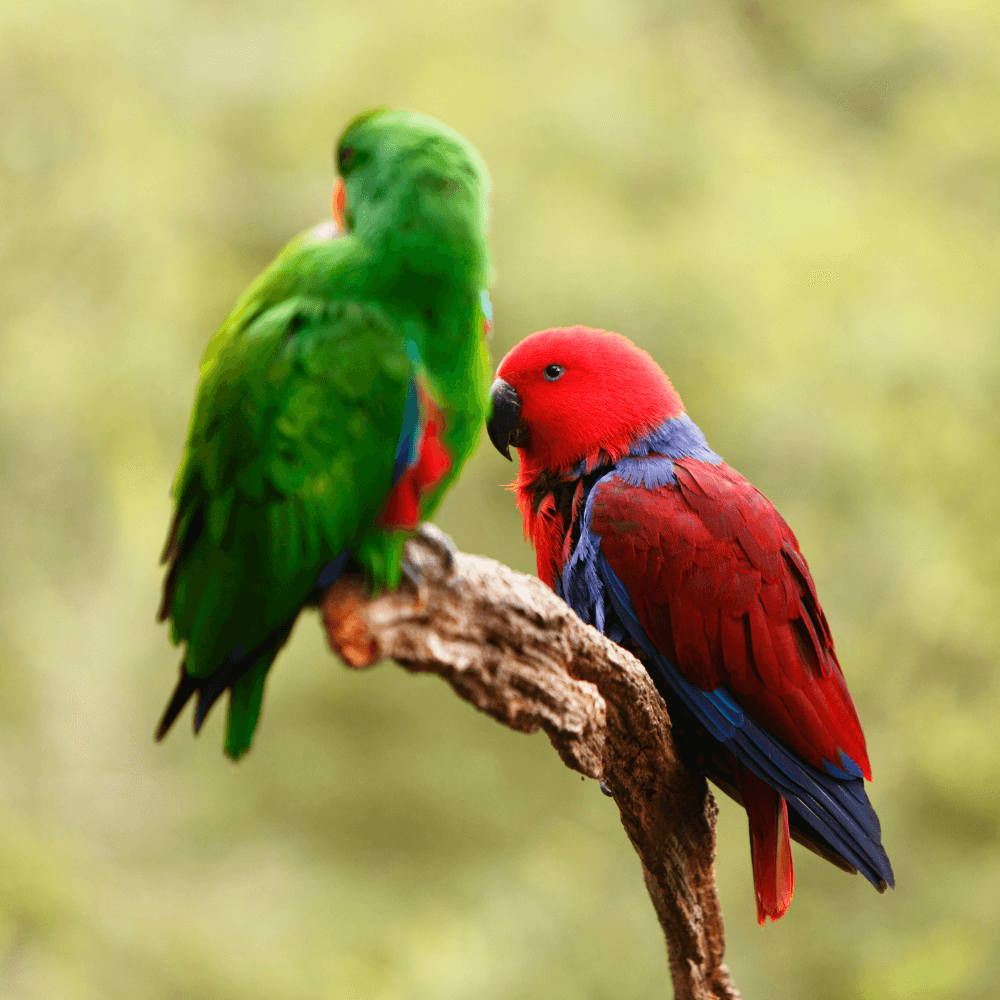
Considering the characteristics, behavior, and nutritional needs of the bird, it is important to ensure sufficient space and a balanced diet. The Eclectus parrot needs a large cage or aviary at least 4 meters high and 2 meters wide, where it can spread its wings well. Provide poles within the installation.
The Eclectus parrot should also leave the cage on short walks, provided that the master has established sufficient trust with the bird. This will make the bird more calm and at ease with its surroundings.
Regarding climatic conditions, this bird adapts to temperature changes. However, it does not tolerate the cold well, which is why it must be offered a good shelter.
On the food side, you can give him vegetables such as carrots, corn, lettuce, or tomato. Fruits such as apples and pears are ideal for their diet: fruits rich in vitamin A will bring shine to their plumage.
In short, the Eclectus parrot is a bird that does not pose major problems as a pet, although in its natural habitat, it is generally more territorial and noisy. Its diet is the source of its beauty, so it is essential to provide it with good nutrition.

